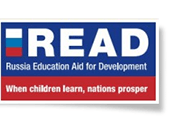On January 24, the GEM Report and the UNESCO Institute for Statistics released the first online, interactive SDG 4 Scorecard to mark the International Day of Education. The Scorecard assesses how likely it is that countries will achieve their benchmarks by 2025 and 2030. The SDG 4 benchmarks are targets that countries have set for themselves on seven SDG 4 indicators, taking their own context and different starting points into consideration. The benchmarks fulfil a commitment that countries made in the Education 2030 Framework for Action.
Countries fall into one of seven categories: no data at all, no trend data, no benchmark, and no, slow, average or fast progress. Our joint report explains the categories in more depth. It also looks at the progress made on early childhood education participation in depth, reviewing how their progress relates to three policies:
Legislate: while about one in two countries do not guarantee a single year of free and compulsory education, there is a large gap in attendance between countries that embed such rights in law and those that do not.
Regulate: 4 in 10 children attend private preschools. Countries tend to regulate administrative matters. Yet, the relatively few counties that regulate to promote equity, for example on fees for disadvantaged groups, enjoy higher participation rates on average.
Finance: On average, countries spend about 0.4% of GDP on pre-primary education. Doubling spending, from 0.25% to 0.50% of GDP is associated with a three times higher participation rates in public pre-primary institutions.
The full report is available here.







